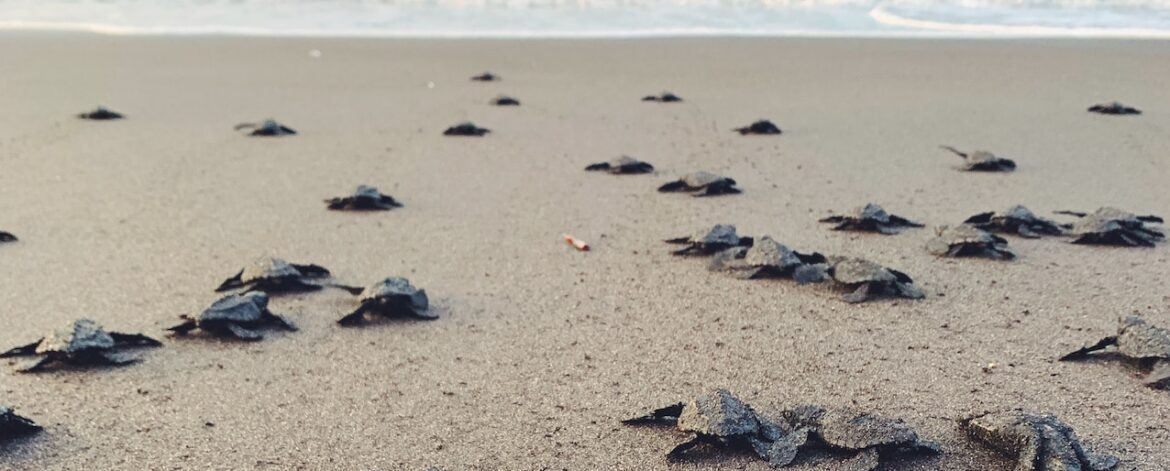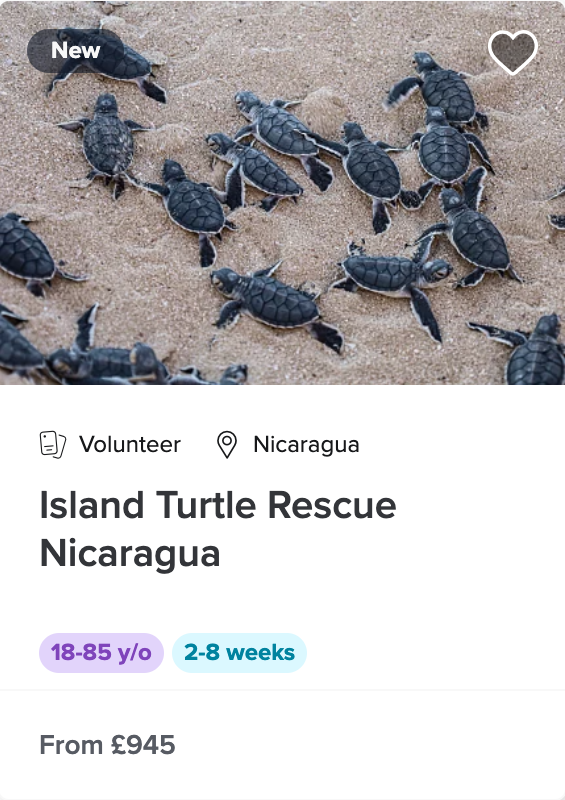People with concerns about the natural world who want to do something about animal welfare can volunteer to work on a turtle conservation program. These projects are really fun and a great way to learn more about turtles, conservation and amazing work being done to help marine animals.
Best Sea Turtle Conservation Programs
About Sea Turtles
Sea turtles are turtles found in tropical and temperate seas all around the world, except the Arctic Ocean. Sea turtles have long, streamlined shell, and their legs have been modified into flippers. Sea turtles are strong swimmers and divers. They vary in color from brown to green or black. These animals must swim to the surface every few minutes to breathe.
When resting, sea turtles can remain underwater for up to 2 hours without breathing. There are 7 species of sea turtles in the world: flatback, green, hawksbill, Kemp’s Ridley, leatherback, loggerhead and olive ridley. Unfortunately all species are either endangered or threatened.
Sea Turtle Facts
- The Leatherback is the largest and heaviest sea turtle.
- Sea turtles travel about 1,300 miles a day.
- Green turtles are sea turtles that eat only plants.
- Sea turtles can live up to 80 years.
- A sea turtle cannot retract its head under the shell like a land turtle.
Behavior
Sea turtles are not considered social animals. They have a varied diet, depending on the species. Green turtles feed on seagrasses and algae. Loggerhead turtles have strong jaws and are able to crush crabs, shrimps, and molluscs. Leatherbacks turtles eat jellyfish and other soft-bodied animals. Some sea turtle species migrate.
Reproduction
Eggs are laid on land. The female digs a pit in the sand using her hind flippers, and deposits up to 200 eggs. Incubation period is 45-70 days. The newly hatched turtles will try to find their way to the water. Many of them are eaten by birds or other predators. Few survive to adulthood.
Duties
You will usually be working under a local biologist, taking part in studies and protection. Duties include shift work, as there are both night and day beach patrols, nest building, harvesting eggs and tagging.
Volunteers are usually required to patrol beaches close to research camp. The patrols not only help to gather valuable population data of the endangered marine turtles, but also serve to discourage poachers and predators trying to raid nests and collect eggs. The two species of turtle most frequently observed are the Olive Ridley and the Pacific Green Turtle.
During peak nesting season (July-November), turtles found nesting on the beach at night are tagged and given a health check. In the mornings you might be required to conduct nest excavations which involve checking the hatched nests to assess reproductive success after the hatchlings have emerged. Total clutch size, number of successfully hatched eggs and the number and stage of development of un-hatched eggs are recorded. Any hatchlings that might have remained trapped in the nest chamber are freed and placed on the beach to allow them to reach the sea.
Locations
This is for the more hardy or dedicated volunteer, as the locations are remote and the conditions pretty Spartan. Projects can be joined in places like Sri Lanka, the Maldives, Nicaragua, Costa Rica, Mexico and the USA.
Volunteer Feedback
“Costa Rica is great! My first day at the hatchery training, about 70 baby turtles hatched and were released later in the early evening. My first night of hatchery watch, we released 23 more baby turtles at night underneath the stars. I’ve been on two night beach patrols to collect eggs that have been laid, but did not come across any.
Aside from these duties, we clean house everyday and tend to the maintenance of our lot, including replacing sandbags around the hatchery and repairing the bamboo fence in front of our common area. We do get a few hours of free time here and there and is perfect for taking a dip in the ocean and relaxing on the beach. I am enjoying my stay thus far.” – Rachel
“Everything has been great here in Montezuma! Our main focus these last few weeks has been building a new hatchery here for the turtles on the coast, which we have almost finished! We have also been clearing trails, building bridges, and repairing systems for our new volunteer camp. It really is SO beautiful here and we absolutely love Montezuma as well. We went on a little trip to Arenal/Monteverde/and Tamarindo this last week and that was great, but for now we’re back at our refuge volunteering. We’re having a wonderful time!” – Lee
“So far I have helped about 350 baby turtles and I love Costa Rica. The Ticos are beautiful people the work here is good and so are the people in charge. I am going to have a lot to remember when I go home about the pura vida. Thanks so much for allowing me to share in this experience.” – Hayley
“Everything here is fantastic! I dont want to leave!!! We have helped so many turtles and seen so many babies hatch! The whole place is beautiful and having a really great time!” – Claire


